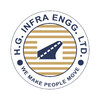Filter interviews by
Patel Engineering Project Engineer - Civil Interview Questions and Answers for Experienced
Patel Engineering Project Engineer - Civil Interview Experiences for Experienced
1 interview found
I applied via Walk-in

(2 Questions)
- Q1. ABOUT CONSTRUCTION AND INFRASTRUCTURE ACTIVITIES AT SITE
- Q2. ABOUT THE TUNNEL EXCAVATION AND SUPPORT WORK
Interview Preparation Tips
Top trending discussions






Interview questions from similar companies

Project Engineer - Civil Interview Questions & Answers
L&T Constructionposted on 24 May 2024
I applied via Approached by Company and was interviewed in Apr 2024. There were 3 interview rounds.
General knowledge test
(2 Questions)
- Q1. Civil engineer technical round
- Q2. Technical interview
(2 Questions)
- Q1. Document verification
- Q2. Salary slip and salary discussion

I applied via Company Website and was interviewed before Apr 2021. There were 7 interview rounds.
Accident, incident
Any hazardous
Any near miss
HIRA
Interview Preparation Tips
- Diploma Fire and Safety

(2 Questions)
- Q1. Outer dia of HDPE pipe and specifications
- Ans.
The outer diameter of HDPE pipe varies based on the intended use and specifications.
HDPE pipes are available in a range of sizes from 16mm to 2000mm.
The outer diameter of HDPE pipe is typically larger than the inner diameter.
The thickness of the pipe wall also varies based on the intended use and pressure requirements.
HDPE pipes are commonly used for water supply, gas distribution, and sewage systems.
- Q2. Work process how to handle contractor and local people how to exicute SOP
- Ans.
To handle contractors and local people, we follow a structured process and execute SOPs.
We establish clear communication channels with contractors and local people.
We ensure that all parties understand the project goals and objectives.
We provide training and support to contractors and local people on the SOPs.
We monitor and evaluate the performance of contractors and local people regularly.
We address any issues or conc...
Interview Preparation Tips

(1 Question)
- Q1. Simple questions about construction safety

I applied via Approached by Company and was interviewed in Nov 2024. There were 2 interview rounds.
(3 Questions)
- Q1. What is safety and how does it relate to hazards?
- Ans.
Safety is the state of being free from harm or danger, while hazards are potential sources of harm or danger.
Safety refers to the measures taken to prevent accidents, injuries, or illnesses in the workplace or any environment.
Hazards are potential sources of harm or danger that can cause accidents, injuries, or illnesses.
Safety measures are implemented to identify, assess, and control hazards to minimize risks and ensu...
- Q2. What are the role and responsibilities of HSE officer
- Ans.
HSE officers are responsible for ensuring health, safety, and environmental regulations are followed in the workplace.
Developing and implementing health and safety policies
Conducting regular inspections and risk assessments
Training employees on safety procedures
Investigating accidents and incidents
Ensuring compliance with local, state, and federal regulations
- Q3. What do you mean by Hira
- Ans.
HIRA stands for Hazard Identification and Risk Assessment. It is a systematic process for identifying potential hazards and evaluating the associated risks.
HIRA involves identifying hazards in the workplace or environment.
It includes assessing the risks associated with each hazard.
The goal of HIRA is to implement control measures to mitigate or eliminate the identified risks.
Examples of hazards include chemical exposur
(1 Question)
- Q1. What is the definition of safety and how does it relate to hazards?
- Ans.
Safety is the state of being free from harm or danger, while hazards are potential sources of harm or danger.
Safety refers to the condition of being protected from harm or danger
Hazards are potential sources of harm or danger that can cause accidents or injuries
Safety measures are put in place to mitigate or eliminate hazards
Examples of hazards include slippery floors, exposed electrical wires, and toxic chemicals
Interview Preparation Tips

(3 Questions)
- Q1. Whats is a Safety policy
- Ans.
A safety policy outlines an organization's commitment to maintaining a safe work environment and preventing accidents.
Defines safety objectives and responsibilities for all employees.
Establishes procedures for reporting hazards and incidents.
Includes training requirements for staff on safety practices.
Outlines emergency response plans, such as evacuation procedures.
Regularly reviewed and updated to reflect changes in r
- Q2. What is a safety
- Ans.
Safety is the condition of being protected from harm or danger, ensuring well-being in various environments.
Safety involves identifying hazards and implementing measures to mitigate risks.
Examples include using personal protective equipment (PPE) in construction sites.
Safety protocols are essential in workplaces to prevent accidents and injuries.
Regular safety training helps employees understand and follow safety guide
- Q3. A safety policy is a set of rules and procedures that an organization has in place to protect people from harm

I applied via Job Fair and was interviewed in Jun 2024. There were 2 interview rounds.
(3 Questions)
- Q1. Work at height hazards?
- Ans.
Work at height hazards include falls, falling objects, unstable surfaces, and improper use of equipment.
Ensure proper training and use of fall protection equipment
Inspect equipment regularly for wear and tear
Secure tools and materials to prevent falling objects
Avoid working on unstable surfaces or in adverse weather conditions
- Q2. Why is work at height 1.8 meters?
- Ans.
Work at height of 1.8 meters is considered a significant risk level for falls in the workplace.
Work at height of 1.8 meters is a common threshold for implementing fall protection measures.
At this height, the risk of serious injury or fatality from a fall increases significantly.
Regulations and standards often specify 1.8 meters as the height at which fall protection is required.
Factors such as surface conditions, tasks...
- Q3. What Is Work At Height Hazards And Precautions?
- Ans.
Work at height hazards include falls, falling objects, unstable surfaces. Precautions include proper training, use of fall protection equipment, regular inspections.
Identify potential hazards before starting work at height
Ensure workers are properly trained on safe work practices
Use appropriate fall protection equipment such as harnesses, guardrails, and safety nets
Regularly inspect equipment and work areas for any def...
(2 Questions)
- Q1. What is the lifting hazard?
- Ans.
Lifting hazard refers to the risk of injury or strain when lifting heavy objects or lifting improperly.
Lifting heavy objects without proper technique can lead to back injuries
Repetitive lifting without breaks can cause muscle strain
Not using proper lifting equipment can increase the risk of accidents
Improperly lifting objects that are too heavy for one person to handle
- Q2. What is crane hazard?
- Ans.
Crane hazard refers to the potential dangers associated with the operation of cranes on a worksite.
Crane collapse due to overloading or improper setup
Striking nearby objects or workers
Electrocution from contact with power lines
Falling objects from the crane
Inadequate training or supervision of crane operators
Interview Preparation Tips
- 3.8 years

I applied via Recruitment Consulltant and was interviewed in Nov 2024. There were 4 interview rounds.
(2 Questions)
- Q1. Morning TBT safety inspection
- Ans.
Morning TBT conducted about daily basis at site Monthly inspection Full body harness Power tools Store inspection Fire extinguisher 🧯 RCCB inspection
- Q2. Height work safe and unsafe work
- Ans.
Safe height work involves proper training, equipment, and procedures to prevent falls and injuries.
Ensure workers are trained in proper safety procedures for working at heights
Use appropriate fall protection equipment such as harnesses, guardrails, and safety nets
Regularly inspect equipment for wear and tear to ensure it is in good working condition
Implement a buddy system or have a rescue plan in place in case of emer...
Group with work,paper work site visit etc.
(2 Questions)
- Q1. Height work training, safe work
- Ans.
Awrness to all works height work Safe work platform inspection with HSSE team and provide green tag
- Q2. General work training
(2 Questions)
- Q1. Height work permit general work permit.
- Q2. Excavation work permit, dshutring work permit.
Interview Preparation Tips
- Height work training
- General work training
- Work Permit
- PP,s
Thank you.


(3 Questions)
- Q1. Asked technical questions
- Q2. What is the bulk modulus
- Ans.
Bulk modulus is a measure of a material's resistance to compression under pressure.
It is a measure of a material's compressibility
It is defined as the ratio of change in pressure to the fractional volume compression
It is used in the study of elasticity and fluid mechanics
Examples of materials with high bulk modulus include diamond and steel
Examples of materials with low bulk modulus include rubber and foam
- Q3. Why there is G constant during bulling of sand
- Ans.
G constant is required during sand bulking to account for the change in volume due to the presence of air voids.
G constant is used to calculate the volume of sand when it is in a loose state.
The presence of air voids in sand causes it to increase in volume, which is known as bulking.
The amount of bulking depends on the moisture content and the type of sand.
G constant is determined experimentally by comparing the volume...
Interview Preparation Tips
Patel Engineering Interview FAQs
Some of the top questions asked at the Patel Engineering Project Engineer - Civil interview for experienced candidates -
Tell us how to improve this page.
Patel Engineering Interviews By Designations
- Patel Engineering Project Engineer Interview Questions
- Patel Engineering Safety Officer Interview Questions
- Patel Engineering Store Head Interview Questions
- Patel Engineering Project Engineer - Civil Interview Questions
- Patel Engineering Workman/Foreman/Technician Interview Questions
- Patel Engineering Engineer Interview Questions
- Patel Engineering Electrical Engineer Interview Questions
- Patel Engineering Site Engineer Interview Questions
- Show more
Interview Questions for Popular Designations
- Civil Site Engineer Interview Questions
- Civil Engineer Interview Questions
- Junior Engineer Civil Interview Questions
- Senior Civil Engineer Interview Questions
- Project Manager Civil Interview Questions
- Civil Foreman Interview Questions
- Civil Supervisor Interview Questions
- Assistant Engineer - Civil Interview Questions
- Show more
Patel Engineering Project Engineer - Civil Interview Process for Experienced
based on 1 interview
Interview experience
Interview Questions from Similar Companies
Patel Engineering Project Engineer - Civil Reviews and Ratings
based on 10 reviews
Rating in categories
|
Project Engineer
141
salaries
| ₹4 L/yr - ₹9.9 L/yr |
|
Assistant Manager
75
salaries
| ₹5.5 L/yr - ₹13.4 L/yr |
|
Civil Engineer
63
salaries
| ₹2.9 L/yr - ₹6.6 L/yr |
|
Mechanical Engineer
43
salaries
| ₹1.8 L/yr - ₹7.2 L/yr |
|
Civil Foreman
40
salaries
| ₹4 L/yr - ₹6.7 L/yr |

L&T Construction

Simplex Infrastructures

ITD Cementation India

Ashoka Buildcon
- Home >
- Interviews >
- Patel Engineering Interview Questions >
- Patel Engineering Project Engineer - Civil Interview Questions for Experienced














